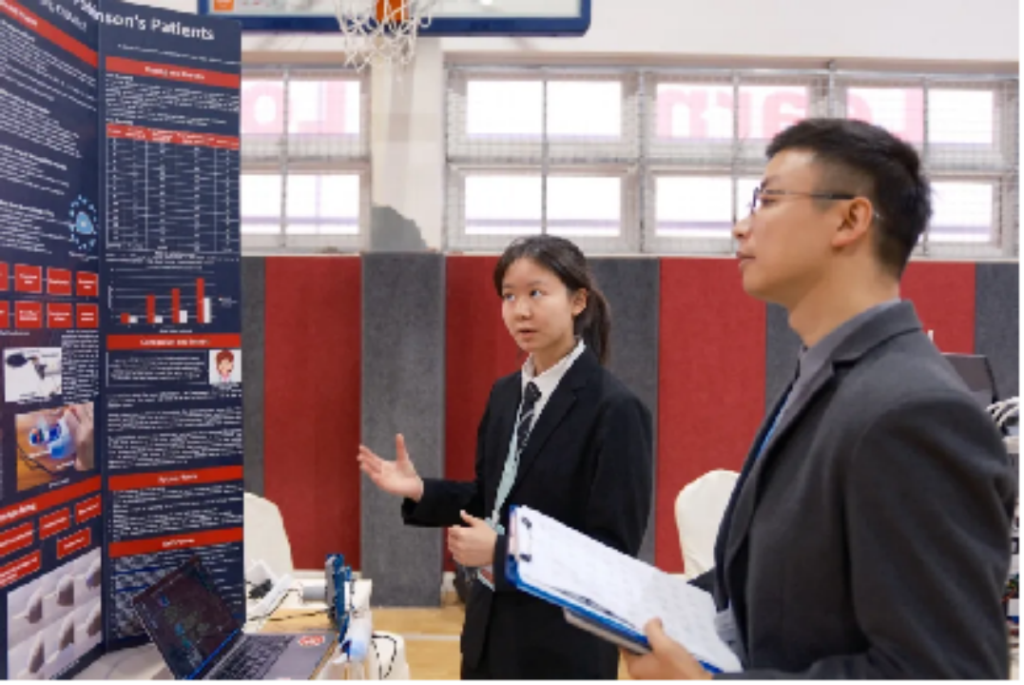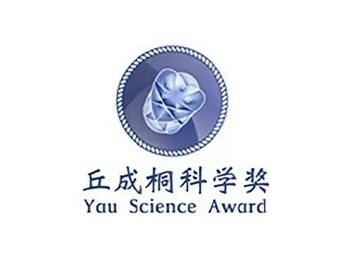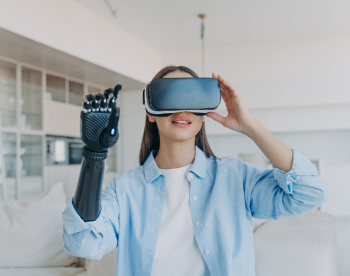A Complete Guide to the 2025 Regeneron Sichuan Science Fair
With the 2025 ISEF officially announced to be held in Ohio, USA, registration for ISEF affiliate competitions in various countries around the world has also been launched one after another, and the selection of many states in the United States has begun!

If you are a high school student studying in a foreign school in China, or a student holding permanent residency abroad (US green card, Canadian maple card, etc.), you must also speed up your preparations. The new season timeline of your exclusive qualifying competition "Sichuan Science Fair" has been officially announced!
Registration for the Sichuan Science Fair began on September 13, and preparations are currently in full swing! If you are aiming for the 2025 ISEF, you must plan and prepare as soon as possible, and don't miss this precious opportunity!
Regeneron Sichuan Science Fair
Sichuan Science Fair is the only regional qualifying fair for the International Science and Engineering Fair (ISEF) open to international high school students living in China. It is a subsidiary competition designed for students studying in foreign schools in mainland China (including those who study at home). Students who study at home are also eligible and are organized by the school to register.
Students in grades 9-12 can improve their scientific research skills and academic knowledge during the competition. Every year, more than 100 students will compete for 5 tickets to the ISEF finals. The awards given by Sichuan Science Fair itself are also highly recognized at the international level.
1.2025 Sichuan Science Fair schedule
Registration: September 13-November 29, 2024
Submission deadline: January 3, 2025
Judgment begins: January 10, 2025
Defense & Award Ceremony: January 16-January 18, 2025 (*January 18 is open to the public ,for a more specific schedule)
The following is the schedule for last year and this year

It is not difficult to find out from the picture that the timeline of this year's Sichuan Science Fair is very close to that of last year. There are only two and a half months from the start of registration to the deadline. Before submitting the project, make full use of this time to prepare for the competition, which will definitely be twice the result with half the effort!
If you want to seize this opportunity, register for Sichuan Science Fair now and prepare your own project!
2. Registration method
Students can participate individually or in teams of no more than 3 people. Each school's project should fill out the approval and research plan form in advance, be approved by the local SRC, IRB* and other institutions before the project starts, and submit the complete documents for approval by the SRC/IRB of this exhibition. Learn more about the rules, forms and tips.
*SRC = Scientific Review Committee; IRB = Institutional Review Board
3. Project Review
Each school must send at least one adult to accompany the students to participate. The project review will be conducted in two rounds, and the judges can judge one or two rounds. The more judges and rounds that have been reviewed, the more authoritative the results will be.
The first round of review only requires understanding of scientific methods, and the depth and breadth of students' knowledge in a specific scientific field are not considered as the main basis. Each entry only needs to be judged twice in the first round.
After entering the second round, it will be reviewed by more discipline-specific judges, and each entry will be reviewed by at least one judge.
2024 Regeneron Sichuan Science Fair Award-winning Projects
ISEF stands for Regeneron International Science and Engineering Fair, which is known as the "World Cup" of science and technology innovation for middle school students around the world. Sichuan Science Fair is the ISEF preliminaries for students attending schools for children of foreigners in mainland China.
2024 Sichuan Science Fair, a total of 54 teams entered the offline defense phase. China Association of Youth Science and Technology Education Workers, Shanghai Association of Youth Science and Technology Talents, Intel Products (Chengdu) Co., Ltd., and Shanghai High School International Department all sent judges to participate in this offline review.
The 2024 Sichuan Science Fair's participating projects include physics, computer science, bioengineering, mechanical engineering and other disciplines.
The 2023 Sichuan Science Fair adopted a combination of online and offline review, and the 2024 Sichuan Science Fair was a full offline review. Students can be said to have used all their skills to showcase their projects. Jelly batteries, sign language recognition, spoons for Parkinson's patients and other projects have left a deep impression. What are the outstanding features of the top 5 works that advanced to ISEF at the 2024 Sichuan Science Fair? How do they stand out from similar projects? The following is the analysis of the top 5 works of Sichuan Science Fair by the Embark teaching and research team
1. Nano-patterning of graphene
In the context of silicon-based electronic device technology gradually approaching its limits, and devices such as computers and mobile phones are beginning to require more electricity and generate a lot of heat, exploring materials that will replace silicon in the future is a worthy research direction.
Two-dimensional (2D) materials, such as graphene and other materials with unique properties, are considered excellent candidates for future electronic technology. 2D materials have become the forefront of quantum material research in physics and materials science. In order to manufacture electronic devices, 2D materials must be patterned into nanostructures, and one of the key requirements is etching.

In this project, the student designed and conducted experiments to achieve nano-patterning of graphene by significantly enhancing the newly developed low-cost, efficient, and low-damage magnetic field-assisted hydroxyl radical etching (MAHRE) method. This method is an excellent solution for etching 2D materials at the nanoscale in industries that use 2D materials to manufacture electronic nanodevices.
2. Solutions to eating problems for Parkinson's patients
The neurological condition of Parkinson's disease causes involuntary tremors in the hands and body, leading to frustration when eating. Currently, the tableware with jitter elimination technology on the market is very expensive, such as GYENNO Parkinson spoon ($299) and Liftware Stable ($195).

Through engineering design and technological innovation, the student not only solved the problem of eating for Parkinson's patients, but also creatively proposed a technical route suitable for IOT (Internet of Things). The final product cost is 4.33% of GYENNO Parkinson spoon and 6.65% of Liftware Stable.
In addition, the project also demonstrated the potential of computer motion control and artificial intelligence in the medical field, providing new solutions to the problems of specific groups. The use of this technology can reduce the amount of food spillage by 62%, and Parkinson's disease medical experts are also looking forward to this product.
3. Skeletal action construction
This project constructs a novel Graph Convolution Neural Network for skeletal actions. The author proposes a channel-level topology optimization method, which helps to learn shared topology as common prior knowledge, simplifies the complexity of channel-level topology modeling, and relaxes the strict constraints of traditional graph convolution. At the same time, the spatiotemporal deep graph convolution network of the model captures the spatiotemporal patterns in the data.

The entire model can convert 2D images into 3D coordinates and recognize the semantic information of 3D coordinate transformation. The performance of the model has been verified in sign language recognition. The project reflects the students' interdisciplinary abilities in mathematics, AI, engineering, etc., and the application scenarios of sign language recognition show the social value of the project.
4. Jelly Battery
The student project is a study of rechargeable flexible batteries. Because the batteries currently available on the market are rigid lithium batteries, there are many shortcomings. In addition to the popularity of wearable devices, students want to make a low-cost, safe, and environmentally friendly rechargeable flexible battery that can be used in wearable biomedical sensors, medical devices, flexible displays, and large-scale energy storage.
The innovation of this project is:
- The highly flammable organic liquid electrolyte in lithium-ion batteries is replaced by polyacrylamide "jelly-like" electrolyte.
- Adding additives such as ethylene glycol and chitosan to modify the material and optimize its mechanical and electrochemical properties.
- The new electrolyte not only ensures inherent safety, but also has environmental protection, super viscoelasticity and self-healing properties.
- The cathode uses high-strength flexible porous carbon cloth, and the anode uses abundant and recyclable zinc instead of scarce lithium.

This project produced a fully flexible zinc-ion battery with superior safety and high performance, combining the battery's energy storage capacity with supercapacitor-like fast charging and discharging capabilities and long life. And it has been verified for practicality in wearable devices.
5. Cancer cell paradox
The abnormal high stemness of cancer cells is one of the main factors that cause cancer cells to resist treatment, but research on this mechanism is still lacking. The student's project focused on a group of primate-specific cancer-testis antigens (CTAs), trying to explore whether these primate-specific CTAs are like a double-edged sword: In human testes, these genes play a vital role in protecting germ cells from environmental stress to ensure the persistence of offspring.
The innovation of this project is:
- Wet-dry combination: First, bioinformatics screening was performed in the Ensemble database API to obtain a group of potential human CTA genes that evolved only after the common marmoset.
- First-hand data source: The student project has first-hand sequencing data to ensure that the data is consistent in fitness.
- The study is more microscopic: Compared with the research that focuses more on protein targets and signal pathways. Students focus on the more peripheral gene interaction level.

Students found that some new CTA genes are essential for the spheroid formation of cancer cells and SSCs. The patients with higher expression levels of these CTAs have worse prognosis and shorter survival time. This study reveals the basic mechanistic connection between human physiology and pathology, that is, CTA is essential for maintaining the high stemness of human SSCs and cancer cells, and provides attractive targets for new cancer diagnosis and treatment.
As a professional team focusing on scientific research competitions and scientific and creative ability training for middle school students, Embark students won more than 67 awards in the 2024 ISEF and won 8 international honorary awards in the global finals. Not only that, Embark also broke the historical record and won the asteroid naming rights award!
In fact, many of the students admitted to TOP universities every year have achieved good results in ISEF. Embark has trained more than 50 ISEF global finalists in the past two years, helping them successfully enter world-renowned universities such as Harvard, MIT, Stanford, and Princeton!

The ISEF competition path is complicated. Some regions need to start preparing projects one and a half years in advance, constantly polishing, participating, and passing many levels before they have a chance to compete for tickets to the global finals! If you want to learn about background improvement, want to impact the 2025 Regeneron ISEF, and customize personalized research topics, you can email Embark and note [student region + grade] to get a one-on-one free online consultation with Embark mentors.
The following is an article discussing how to stand out from the regeneron ISEF and Embark teaching and research mentors’ detailed analysis of the award-winning works in the 22 subject categories of the regeron ISEF.
2.The Ultimate Guide to Defending the 2024 International Science and Engineering Fair(ISEF)
3.Empowering Youth Innovation: Highlights from the 2024 ISEF Global Finals
4.The Regeneron ISEF 2024 Global Finals Winning Projects: Highlights and Analysis
5.Regeneron ISEF 2024 BMED First Award: Highlights and Analysis
6.Regeneron ISEF 2024 ENBM First Award: Highlights and Analysis
7.Regeneron ISEF 2024 CELL First Award: Highlights and Analysis
8.Regeneron ISEF 2024 ETSD First Award: Highlights and Analysis
9.Regeneron ISEF 2024 ENEV First Award: Highlights and Analysis
10.Regeneron ISEF 2024 MCRO First Award: Highlights and Analysis
11.Regeneron ISEF 2024 CBIO First Award: Highlights and Analysis
12.Regeneron ISEF 2024 EBED First Award: Highlights and Analysis
13.Regeneron ISEF 2024 EGSD First Award: Highlights and Analysis
14.Regeneron ISEF 2024 PHYS First Award: Highlights and Analysis
15.Regeneron ISEF 2024 PLNT First Award: Highlights and Analysis
16.Regeneron ISEF 2024 ROBO First Award: Highlights and Analysis
17.Regeneron ISEF 2024 SOFT First Award: Highlights and Analysis
18.Regeneron ISEF 2024 TECA First Award: Highlights and Analysis
19.Regeneron ISEF 2024 TMED First Award: Highlights and Analysis



